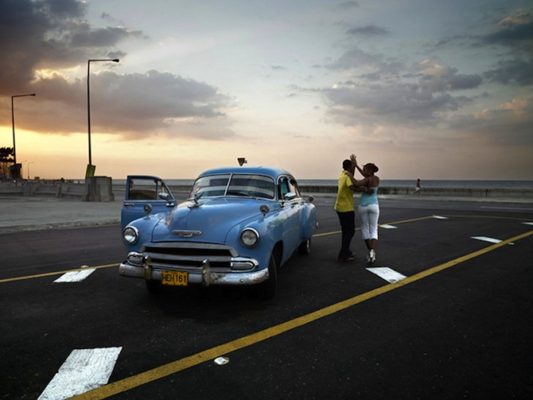Search
To search for an exact match, type the word or phrase you want in quotation marks.
A*DESK has been offering since 2002 contents about criticism and contemporary art. A*DESK has become consolidated thanks to all those who have believed in the project, all those who have followed us, debating, participating and collaborating. Many people have collaborated with A*DESK, and continue to do so. Their efforts, knowledge and belief in the project are what make it grow internationally. At A*DESK we have also generated work for over one hundred professionals in culture, from small collaborations with reviews and classes, to more prolonged and intense collaborations.
At A*DESK we believe in the need for free and universal access to culture and knowledge. We want to carry on being independent, remaining open to more ideas and opinions. If you believe in A*DESK, we need your backing to be able to continue. You can now participate in the project by supporting it. You can choose how much you want to contribute to the project.
You can decide how much you want to bring to the project.

In Cultura i Imperialisme, Edward Said talks about the climate generated by the empire in politics and economics as much as in art. Said refers to the way in which consciously or unconsciously, artistic production promotes the circulation of theories that disseminate different collective imaginations, forms and concepts of colonial domination, as well as national identities or colonial nostalgia for ancient metropolises and frustration over the loss of their colonies. Said, quite rightly, ends up establishing that the crossovers between “culture and imperialism are obligatory”, as what remains subjectively implicit carries more weight than the platitudes of economic or commercial policies.
An example of these crossovers between ex-metropolis and ex-colonies is Photoespaña. Its artistic director, the Cuban Gerardo Mosquera, has proposed to find new solutions, organising the whole structure of the event on a private basis and endeavouring to give a radical twist in his curating with a shift towards visions that are more akin to those of other international art events. For this edition it is proposed to tackle the ‘body’, ‘Eros’ and ‘politics’, inviting artists of international stature such as Shirin Neshat and Cristina Lucas. That said, the Casa de America in Madrid and in the event itself, is showing the exhibition “La terra més bella, Cuba“, inspired in “the way one sees and perceives a culture, perceiving the earth, the skin and the flavour of a different culture”, repeating in the title Christopher Columbus’s phrase when he arrived at the island.
I know that currently many photographers and “decent” curators believe in their work and the social commitment that it generates, nevertheless they still reproduce the same canons that don’t allow this “Third world” to be seen in a manner other than as subordinate or dominated. Their attitude is not tied to moral considerations, or to photographers who aim to be supposedly “uncontaminated” and impartial in front of what they see.
Martí Manen lamented in an article published here about the cultural forms and recognisable taboos that remain embedded in social practices and the current ideological plan. He mentioned the lack of veracious exhibitions about Latin America and the loss of this dialogue between Spain and Latin America, of the need to do something more than use Madrid as a port of entry into Europa (or Latin America as a port of entry into Hollywood).
“La terra més bella …” is an example of this lack of veracity. I know some of the photographers participating and their intention is only to document, once more, the lack of regulation, this world marginalised and isolated due to the blockade, which does nothing more than reproduce the apathy, abandonment and absurd ravings of popular religion and pilgrimages.
And the first to rally around this idea were the Cuban photographers themselves, talents behind the lens that debate between a strong sense of national identity and a complex of subordination which they mock themselves with. But as happens with all the subjects that deal with minorities or disadvantaged groups, the implicit intention is not the same when looking at oneself as when looking at another, even if it is riddled with the supposed innocence of impartiality. A sense of moral distance will always weigh upon foreign photographers, just as it happens when one portrays a social group that one doesn’t form part of, that can only be seen by way of stereotypes, such as the curves of the body of a mulatto, religion, social depression, the amazing and surrealist scenes of a country that succumbs to social chaos, as described by Alejo Carpentier in his novel “The Kingdom of this World”.
“I only portray what I see” could allege major photographers like García Alix or Cristina García Rodero. To belie them, not so long ago Babak Salari, a recognised Iranian photographer, visited the island and portrayed another frequent subject: transvestites and homosexuals, both within as much as outwith their familiar environment. But he also dedicated himself, pointedly, to portraying important homosexual personalities within the field of the visual arts, literature and the theatre. And then the focal point changed, demonstrating that photographers as much as curators are always conscious of what they do, and that there is always a prejudgement, a predetermined choice about what is to be seen and how it is to be seen.

Mabel is convinced that everything is constructed in accord with norms that regulate the way we do things: identity, patterns of social behaviour, public membership, or the paradigms that govern artistic and curatorial practices. She thinks that developing a profoundly critical sense about everything we do leads us to question up to what point we are prepared to question these patterns and rules, even if it is only to enter into other schemata.
"A desk is a dangerous place from which to watch the world" (John Le Carré)